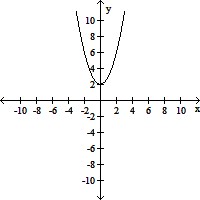Use mathematical induction to prove the following. =
= 
What will be an ideal response?
Answers may vary. One possibility:
Sn:  =
= 
S1: 5 + 9 = 
Sk:  =
= 
Sk+1:  =
= 
1. Basis step: Since  =
=  = 14 = 5 + 9, S1 is true.
= 14 = 5 + 9, S1 is true.
2. Induction step: Let k be any natural number. Assume Sk. Deduce Sk+1. =
= 
[5(k + 1) + 9] +  = [5(k + 1) + 9] +
= [5(k + 1) + 9] + 
 = [5(k + 1) + 9] +
= [5(k + 1) + 9] + 
=  +
+ 
= 
= 
= 
= 
=  .
.
You might also like to view...
Factor by grouping.12x2 + 25x + 12
A. (3x - 4)(4x - 3) B. (12x + 4)(x + 3) C. (3x + 4)(4x + 3) D. Prime
Determine if the complete graph represents a function that is even, odd, or neither.
A. neither B. odd C. even
In the energy demand problem above, the demand vectors could be represented in a 2 row matrix, where row 1 contains the energy demands of the consumers and row 2 contains the energy demands of the energy industries:D =  The researcher then changes the original demand matrix using the matrix equation D2 = A + 0.2D, where A =
The researcher then changes the original demand matrix using the matrix equation D2 = A + 0.2D, where A =  . Use the matrix operations on a graphing calculator to calculate the new demand matrix in his model.
. Use the matrix operations on a graphing calculator to calculate the new demand matrix in his model.
What will be an ideal response?
Find a rational function that satisfies the given conditions. Answers may vary, but try to give the simplest answer possible.Oblique asymptote y = x + 3
A. f(x) = 
B. f(x) = 
C. f(x) = 
D. f(x) = 